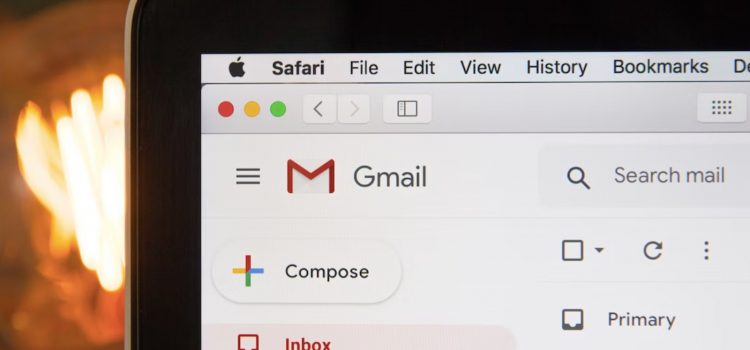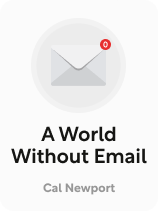

This article is an excerpt from the Shortform book guide to "A World Without Email" by Cal Newport. Shortform has the world's best summaries and analyses of books you should be reading.
Like this article? Sign up for a free trial here.
What does Cal Newport have to say about emails? Why does he warn against constantly checking your email?
In A World Without Email, Cal Newport argues that email makes workers less happy and productive. He further explains why this is, and the downsides of the distracted mindset emails create.
Read below for a better understanding of Cal Newport’s email warnings.
Our Current Approach to Work: The Hyperactive Hive Mind Workflow
Cal Newport’s email argument says that most knowledge workers structure their work days around responding to unscheduled emails and instant messages rather than around the knowledge work they were hired to do. A 2019 study showed that the average employee sent and received 126 emails a day, and another study showed that employees check their instant messenger app once a minute on average and their inboxes 77 times a day. A third study indicated that many knowledge workers can only perform about an hour of uninterrupted knowledge work a day. The rest of their day is spent responding to a barrage of incoming emails and messages.
Newport coined a term to describe this state of work that revolves around responding to impromptu messages: the hyperactive hive mind workflow (we’ll refer to this as HHMW).
(Shortform note: Let’s parse Newport’s term, as it’s multilayered: Hyperactive means excessively or abnormally active—implying more communication than necessary. The “hive mind” is a mode of thinking that makes your individual actions and decisions subservient to your group’s: If the rest of your group communicates more than necessary, you will, too. A workflow is the sequence of steps that move a task from beginning to completion. Newport may be using “workflow” in a tongue-in-cheek way: His point about the hyperactive hive mind is that there isn’t a workflow. Communication and tasks get done chaotically and without a governing structure.)
What Feeds the Hyperactive Hive Mind Workflow?
What factors create and drive the HHMW? Newport points to four catalysts:
Hive Mind Catalyst #1: Fear of Alienation From Your Group
Because social connection is evolutionarily critical to human survival, failing to maintain it—even via email—feels terrible. This sense that you’re neglecting someone keeps you glued to your inbox in an effort to not alienate yourself from others.
Hive Mind Catalyst #2: The Misconception That Asynchronous Communication Is Easier
Additionally, Newport writes that most workers think asynchronous communication (communication that doesn’t require both parties to respond in the moment) is easier and more efficient than synchronous (talking in person, for instance), but it’s not: Asynchronous communication extends the time a conversation takes because it requires many more messages to be exchanged. For instance, setting up a meeting verbally might take two minutes, while setting up a meeting via email could require a dozen emails. This reliance on asynchronous communication makes the HHMW almost unavoidable.
Hive Mind Catalyst #3: Pressure to Be Increasingly Responsive
When time-saving technology becomes available, there’s increased pressure for you to use it to respond more quickly and at all hours of the day, thus perpetuating the HHMW, writes Newport. Harvard Business School professor Leslie Perlow calls this phenomenon the cycle of responsiveness: When the technology to deliver more is available, clients and co-workers expect more of you, and you work more to meet those expectations.
Hive Mind Catalyst #4: Our Conception of the Knowledge Worker
According to Newport, the final catalyst of the HHMW is the way we view today’s knowledge worker—a view shaped by famed management consultant Peter Drucker, who coined the term in 1959. He believed that knowledge workers must be left to their own devices to complete the work in which they specialized and which they likely knew how to do better than their superiors. This means companies give knowledge workers free rein over how to structure their days, thinking this to be most efficient. However, this freedom also means there are no guidelines for how much time knowledge workers must spend performing ancillary tasks, like responding to emails and messages. Because knowledge workers are usually part of a team that relies on their input and, as discussed above, feel an evolutionary need to support that team, they spend a disproportionate amount of time responding to their team’s messages.
What Are the Downsides of the Hyperactive Hive Mind Workflow?
Newport writes that there are four drawbacks of the HHMW, both for companies and individuals.
Downside #1: Knowledge Workers Constantly Multitask and Are Thus Less Productive
The hyperactive hive mind drive to constantly check email means workers are almost always multitasking: performing their main work function while also responding to messages, asserts Newport. Such multitasking isn’t productive because it takes significant cognitive resources and energy to switch between tasks, which reduces performance on both. It also takes longer to complete two tasks at once than to complete two tasks in succession. This makes multitasking inefficient for the company, which isn’t getting the best output from workers.
Downside #2: Knowledge Workers Do More Work Than Necessary
Because it’s so easy to email, colleagues are more likely to email a request to a knowledge worker than to figure out and handle the problem themselves, writes Newport. The result of this is that the recipient must spend time dealing with requests that could have been otherwise handled.
Downside #3: Written Communication Can Be Ambiguous
Written communication fails to convey all the nonverbal information—tone, mode of speech, body language—that’s conveyed through in-person interactions, making it a relatively poor method of communication, claims Newport. This means you must write many emails to communicate what could be said verbally in moments. Additionally, you might worry about whether your meaning comes across appropriately in email or about a message that seems to convey anger (but doesn’t really).
Downside #4: Workers Are Miserable
The final implication of the HHMW stems from the above implications: Reduced productivity, excess work, and impoverished communication make workers miserable, concludes Newport. (Shortform note: A workforce of miserable employees hurts companies: Some statistics show that miserable workers cause a loss in productivity of $450 billion to $550 billion per year in the US. Conversely, happy workers are up to 20% more productive than unhappy ones.)

———End of Preview———
Like what you just read? Read the rest of the world's best book summary and analysis of Cal Newport's "A World Without Email" at Shortform.
Here's what you'll find in our full A World Without Email summary:
- How email makes knowledge workers less productive and more unhappy
- How to improve the channels through which people communicate
- Why you should implement protocols to reduce unnecessary work






